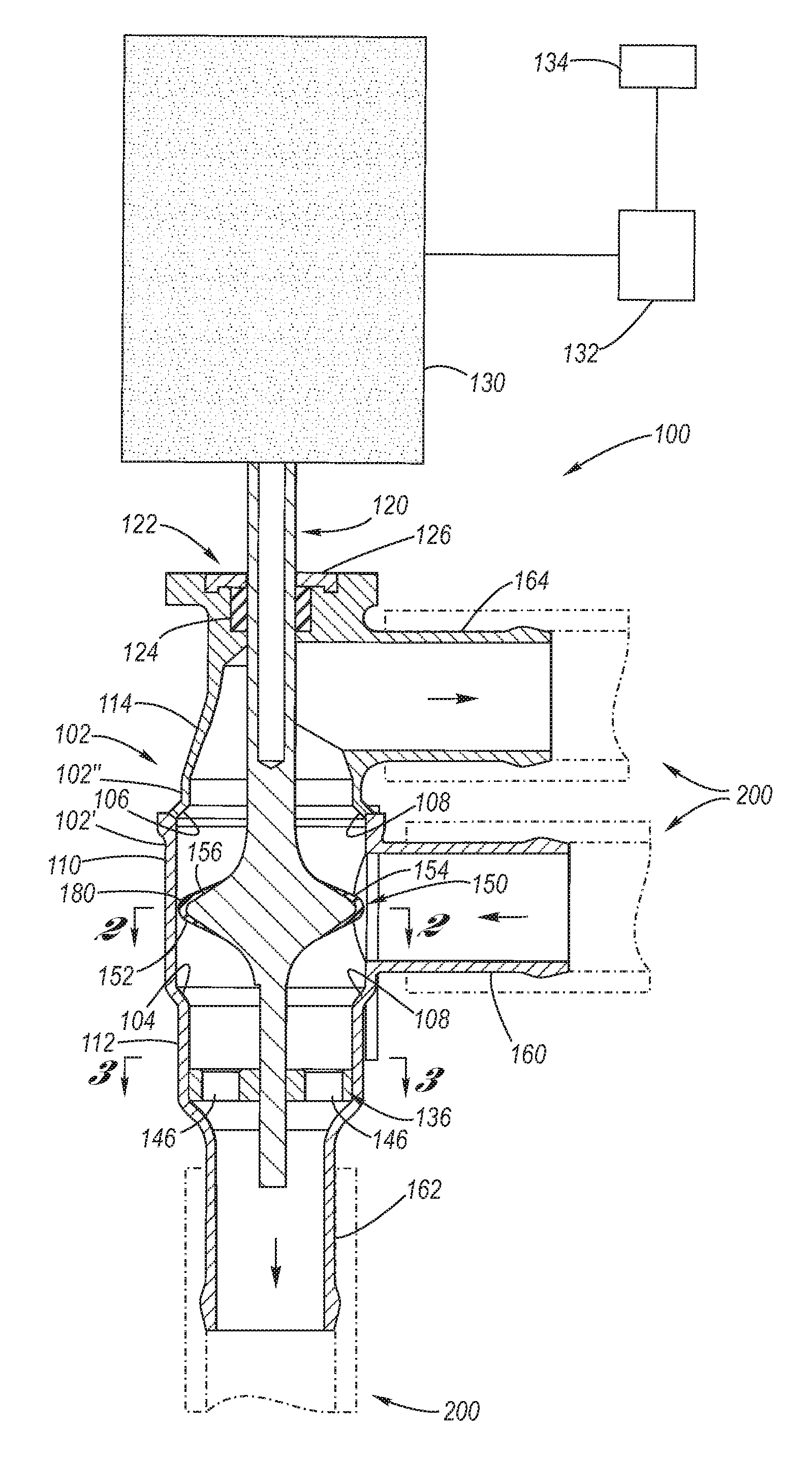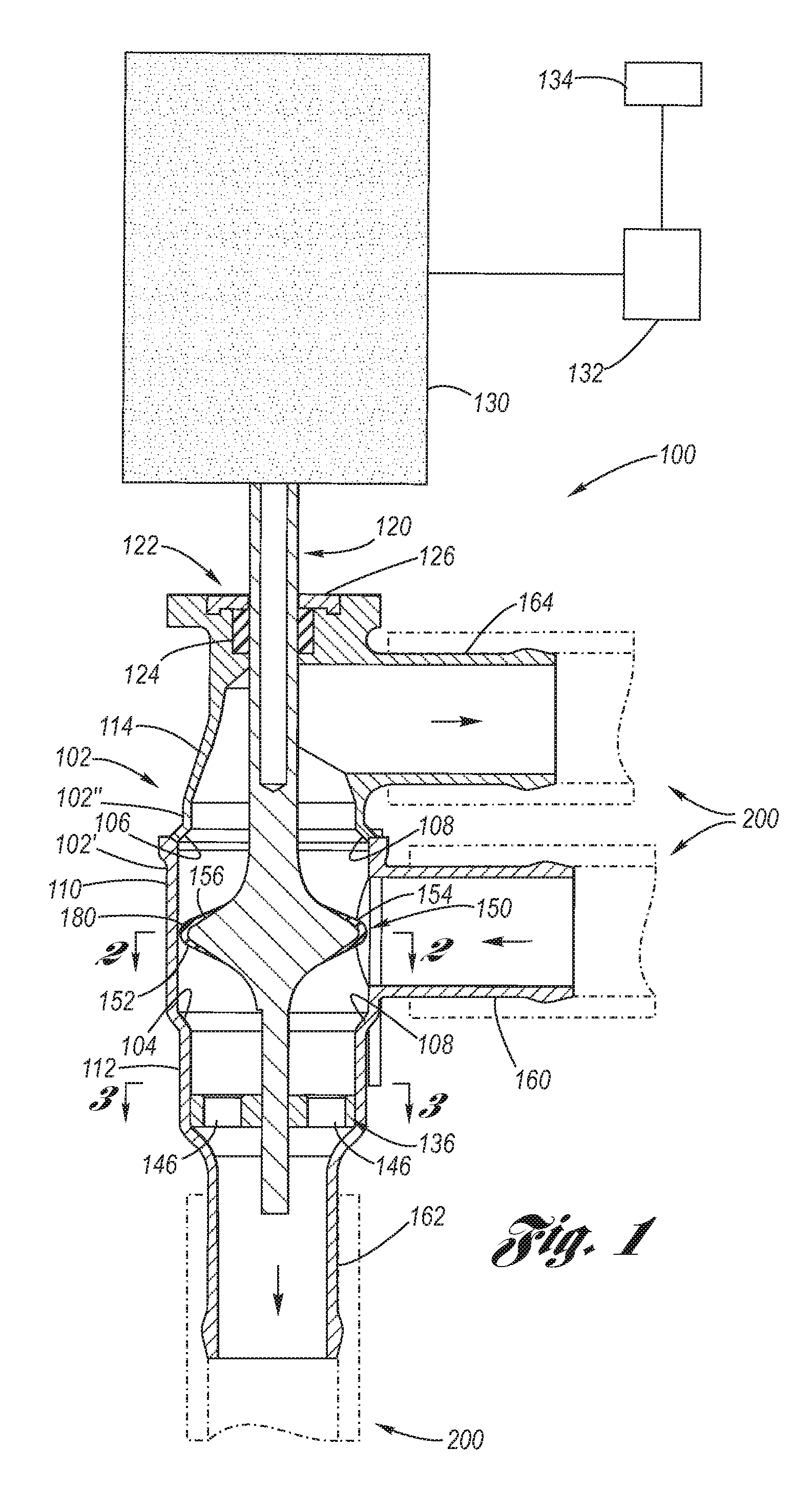Drive System For An Electro-Mechanical Three-Way Dual Seat Valve
a technology of electro-mechanical and dual seat valves, applied in the direction of multiple way valves, valve details, valve arrangements, etc., can solve the problems of high scrap rate, high pressure on the valve actuator, and wear of the seal surface, so as to reduce or eliminate the leakage and wear of the seal, the effect of minimizing energy consumption
- Summary
- Abstract
- Description
- Claims
- Application Information
AI Technical Summary
Benefits of technology
Problems solved by technology
Method used
Image
Examples
Embodiment Construction
[0035]Referring now to the Drawings, FIGS. 1 through 12 depict various exemplary aspects of the structure and function of a three-way dual seat valve, and FIGS. 13 through 21 depict various exemplary aspects of a leadscrew drive system according to the present invention for the three-way dual seat valve.
[0036]Referring firstly to FIGS. 1 through 12, a three-way dual seat valve 100 will now be detailed. This three-way dual set valve 100 is described in U.S. patent application Ser. No. 13 / 286,452, filed on Nov. 1, 2011, to K. R. Kabel, entitled “Electro-Mechanical Three-Way Dual Seat Valve”, and assigned to the assignee hereof, wherein the disclosure of said application is hereby incorporated herein by reference.
[0037]The three-way dual seat valve according to the present invention includes a valve body 102 which, for purposes of manufacture, is composed of first and second valve body members 102′, 102″ which are mutually welded, threaded or otherwise sealingly joined and mechanically...
PUM
 Login to View More
Login to View More Abstract
Description
Claims
Application Information
 Login to View More
Login to View More - R&D
- Intellectual Property
- Life Sciences
- Materials
- Tech Scout
- Unparalleled Data Quality
- Higher Quality Content
- 60% Fewer Hallucinations
Browse by: Latest US Patents, China's latest patents, Technical Efficacy Thesaurus, Application Domain, Technology Topic, Popular Technical Reports.
© 2025 PatSnap. All rights reserved.Legal|Privacy policy|Modern Slavery Act Transparency Statement|Sitemap|About US| Contact US: help@patsnap.com



